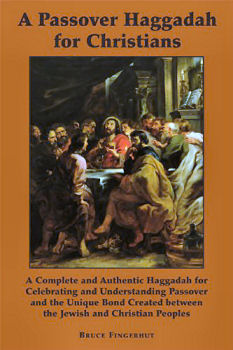
|
Posted July 12, 2011
Book: A Passover Haggadah for Christians Author: Bruce Fingerhut St. Augustine’s Press. South Bend, IN. 2011. pp. 49 An Excerpt from introductory notes:
The Haddadah tells the story of the actual exodus, or “going forth,” and reminds the participants of the plagues visited upon the Egyptians to force Pharaoh (Ramses II) to release the Hebrews from their captivity in Egypt. It also recounts several theories about the meaning of these events. This Haddadah retains all the central prayers and explanations, but in an easy-to-follow style; it also offers a wider explanation in light of the epiphany of Christ. None of the materials in a typical Haggadahare in any way distorted, nor is any significant portion of the Haddadah left out. The many parts of the Haggadah that refer to scriptural passages now have the citations. An Excerpt from the book: The Haggadah itself does not explain adequately why we should recline (at table), so this footnote will have to suffice. In the ancient Middle East, only free men reclined at table while the Hebrews, then slaves, stood. The fact that after the exodus they were no longer slaves, but freed by the blood of the lamb (which obviously, took on a more dramatic meaning after Christ’s Passion), is indicated by their ritually reclining. A very interesting side-note: In John 13:1-2 and John 21:20, Jesus leaned on John to demonstrate the freedom from Egyptian slavery, wrought through the original lamb sacrifice at the Passover. |
|
